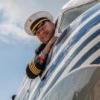
Sign in to follow this
Followers
0

[04JUN16] PMDG: Killing "Simmerisms" since 1997
By
rsrandazzo, in PMDG DC-6 Cloudmaster


By
rsrandazzo, in PMDG DC-6 Cloudmaster